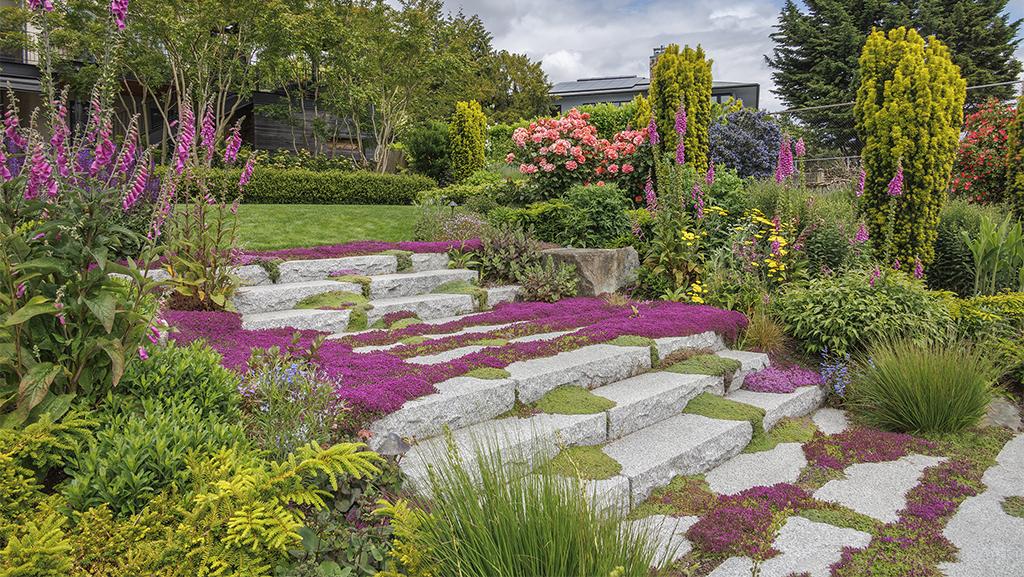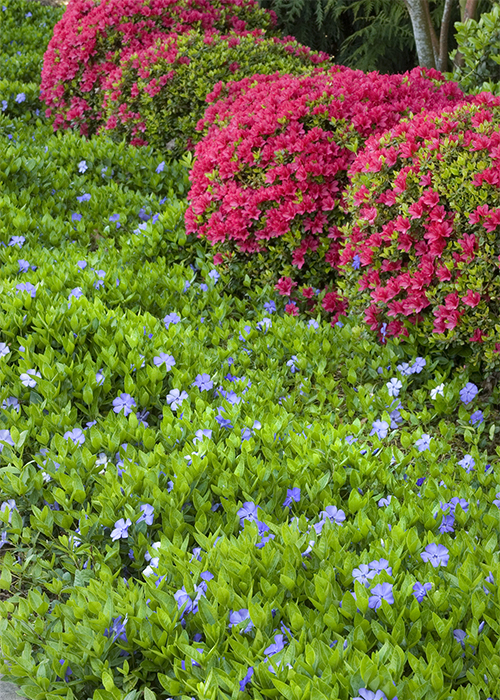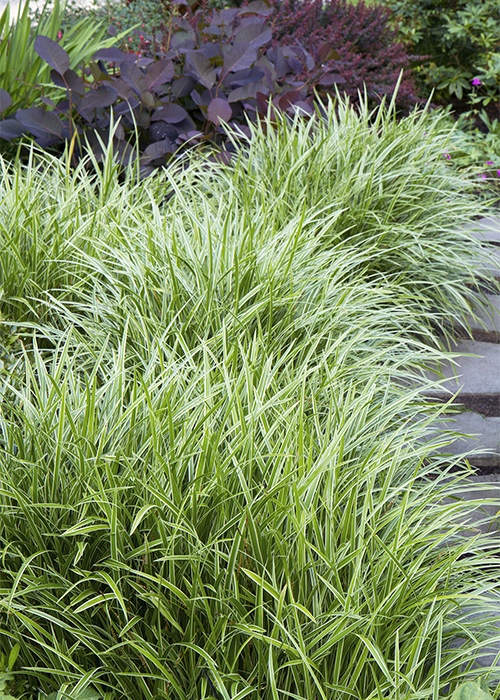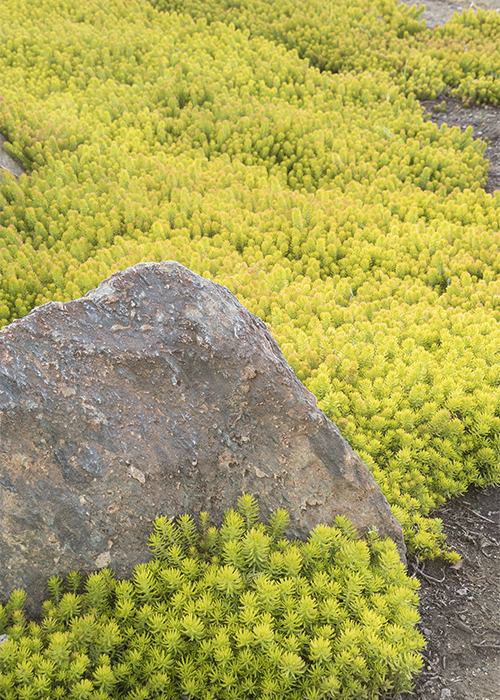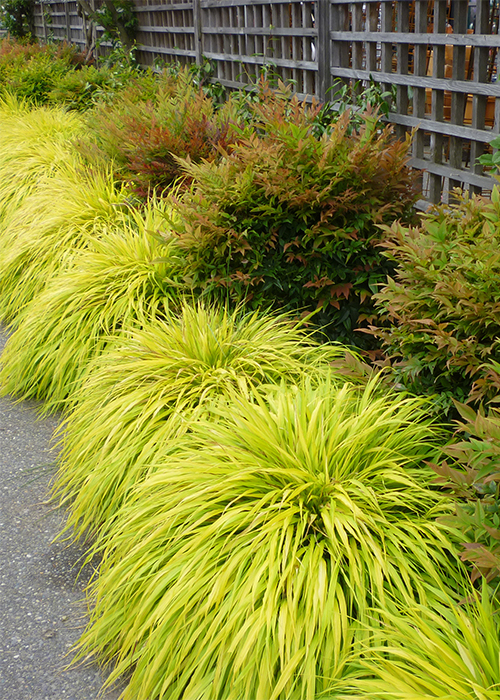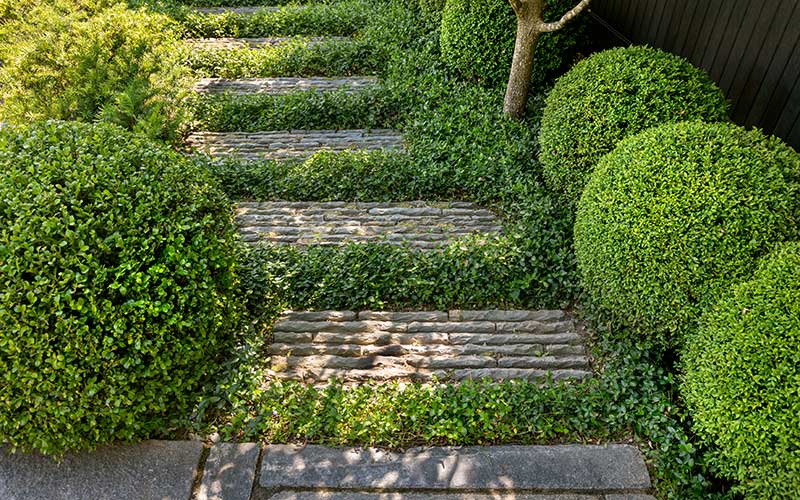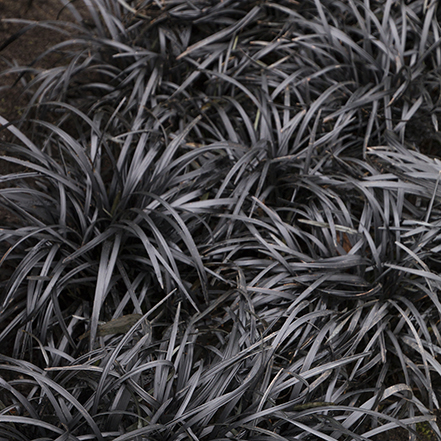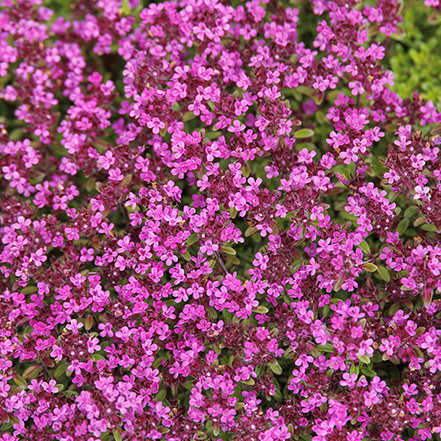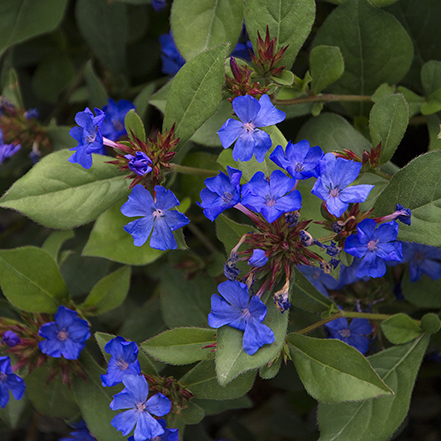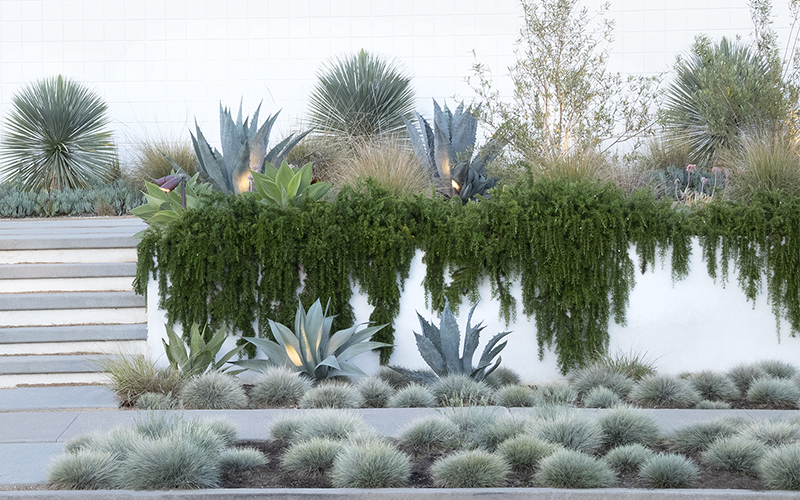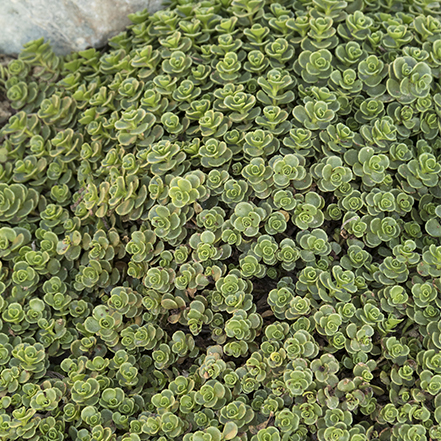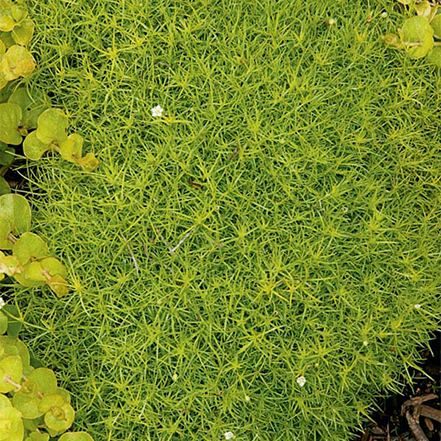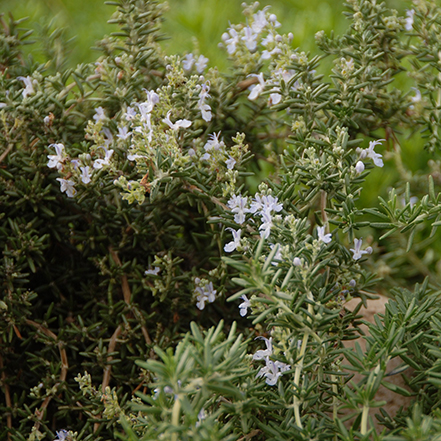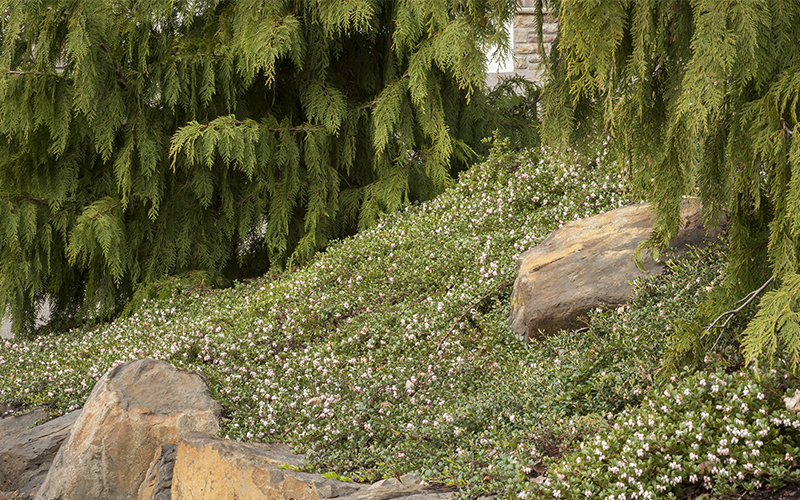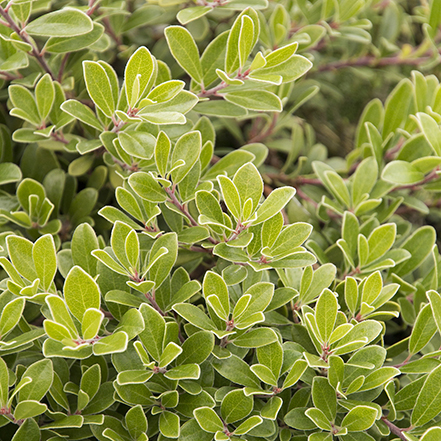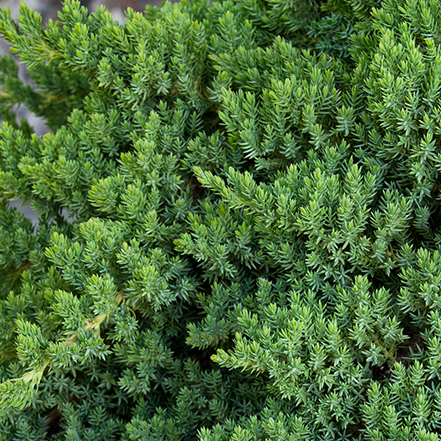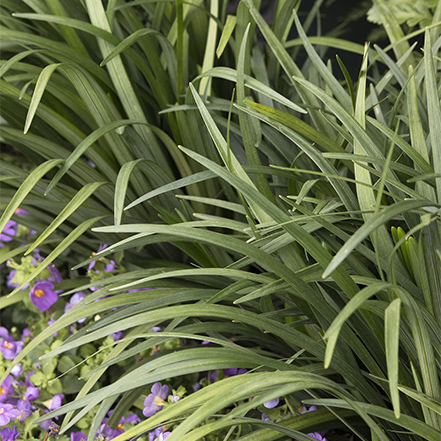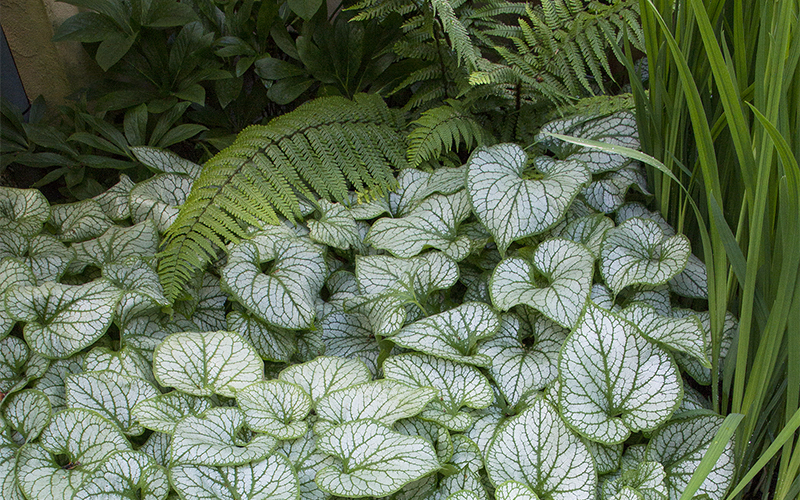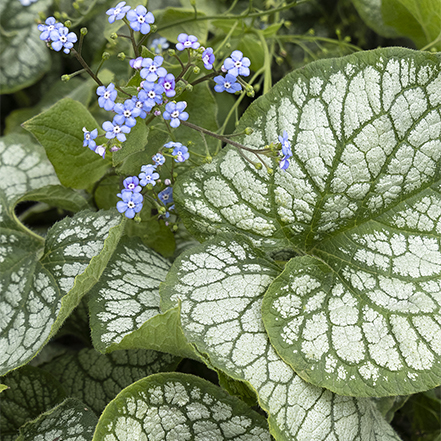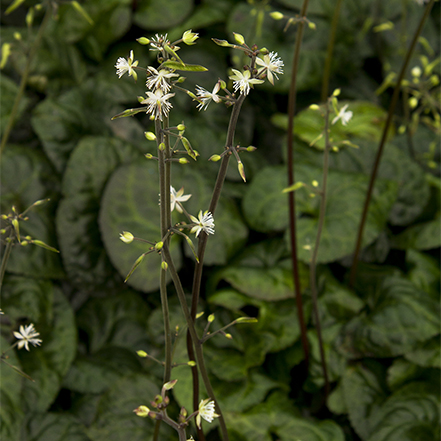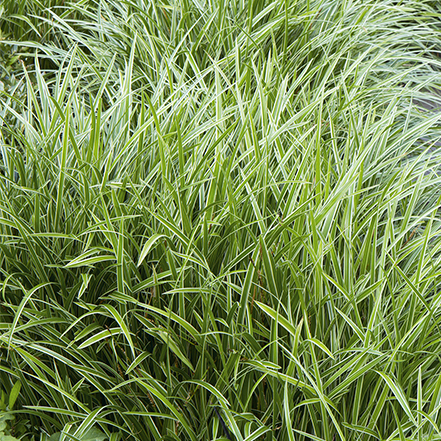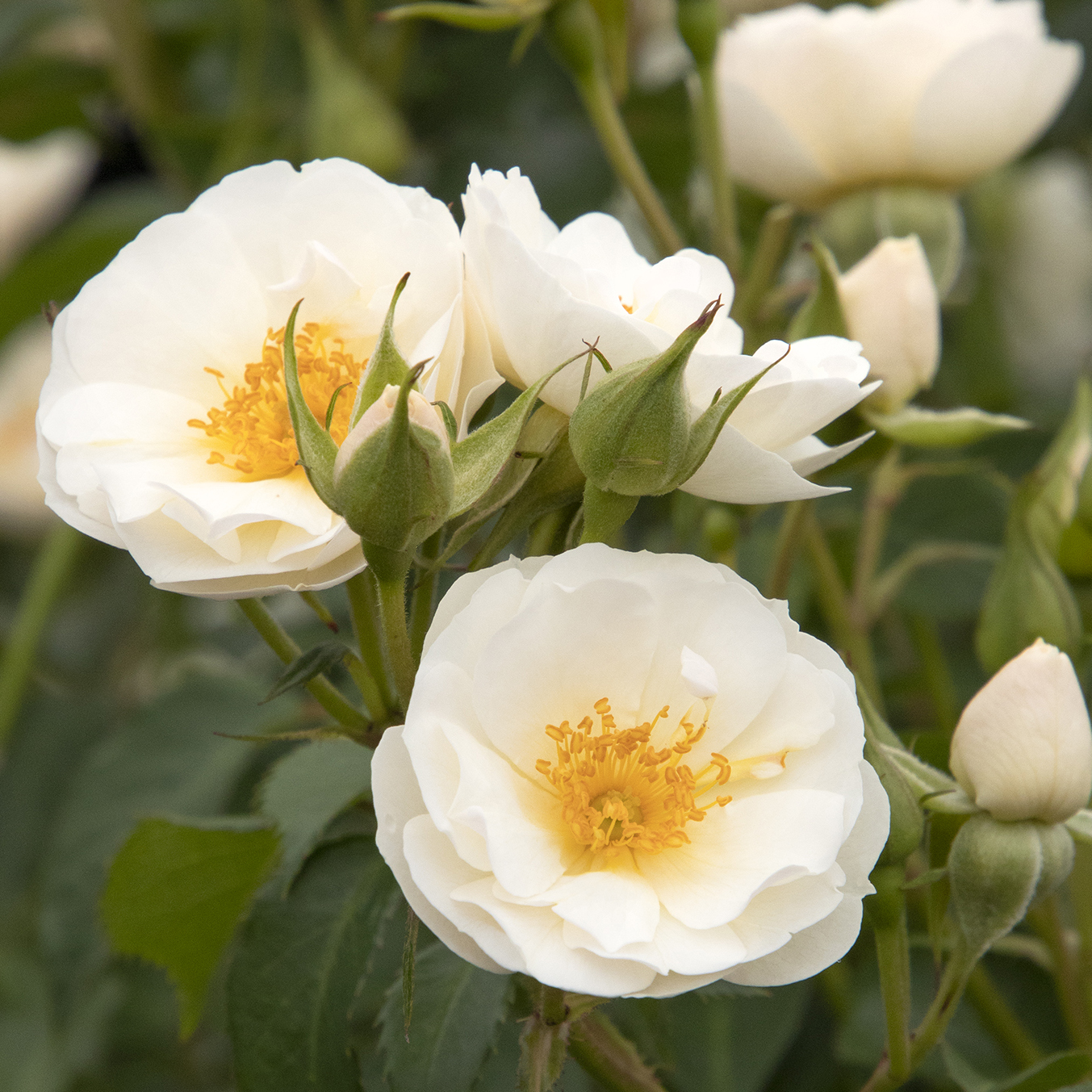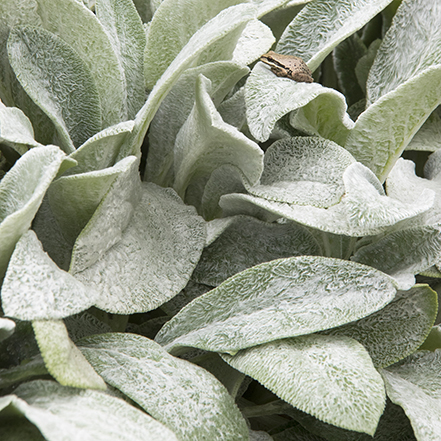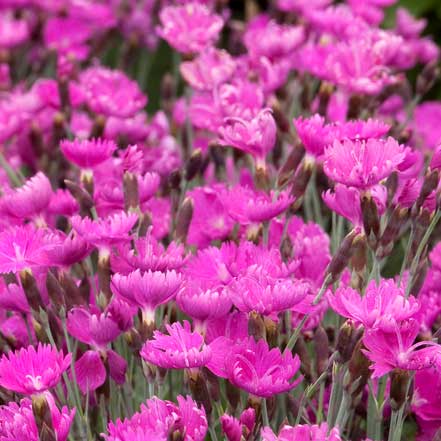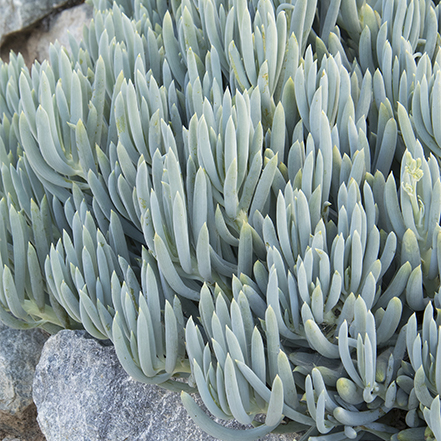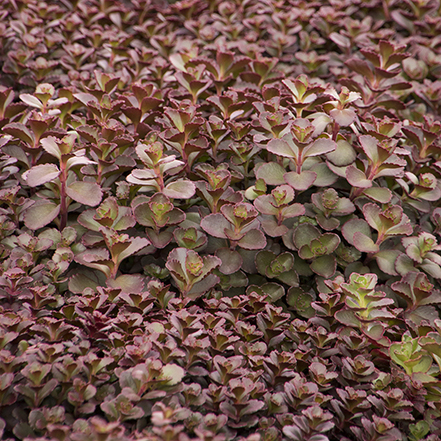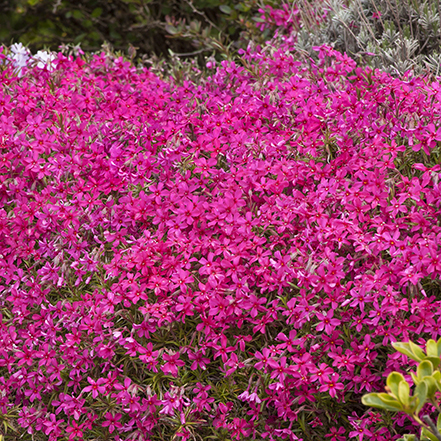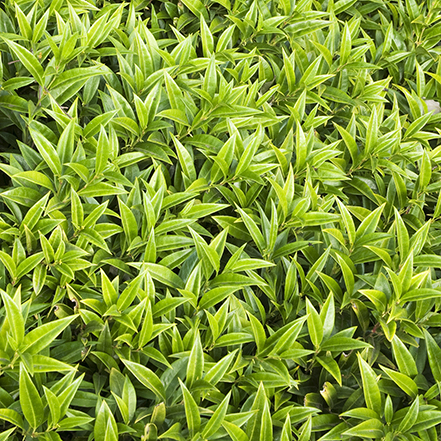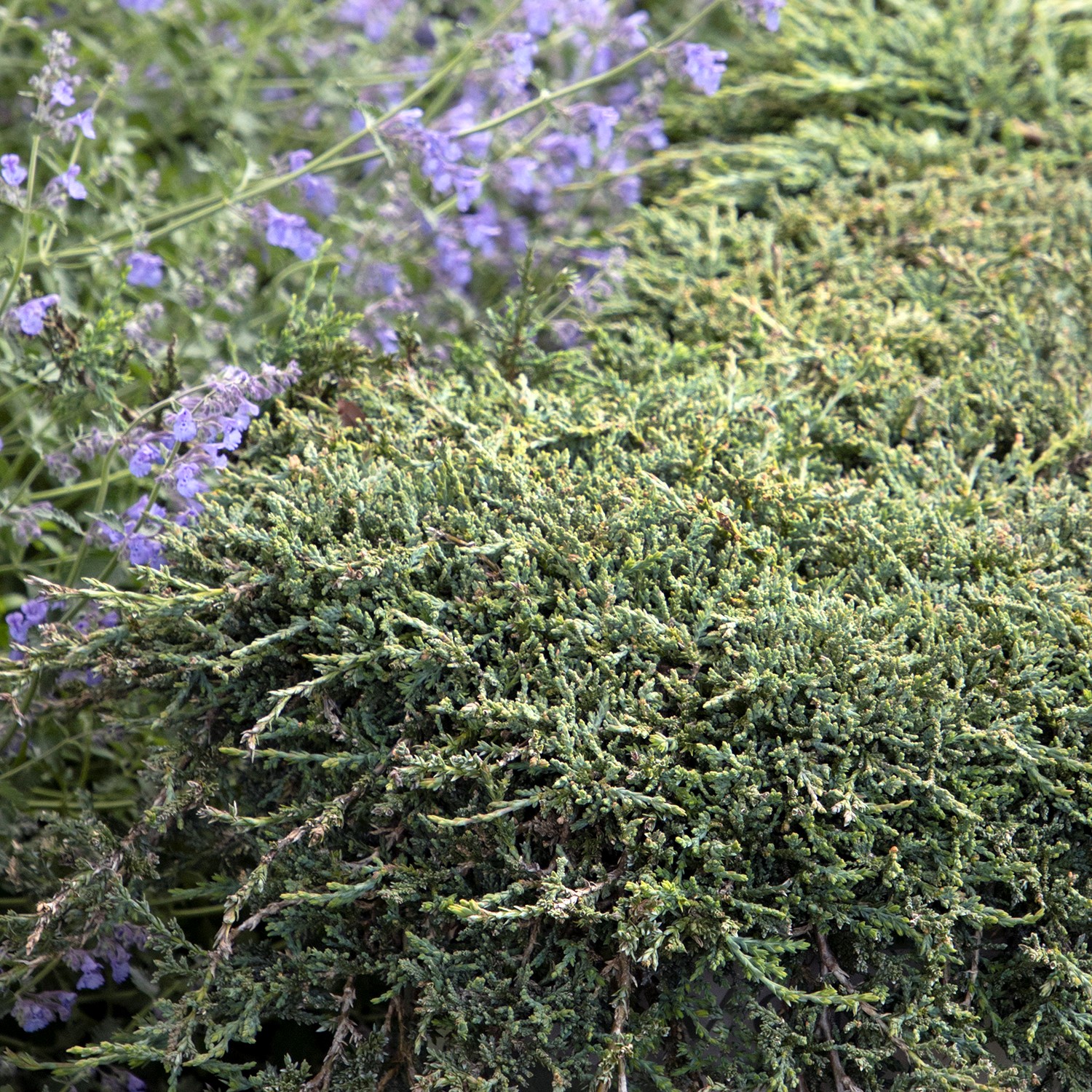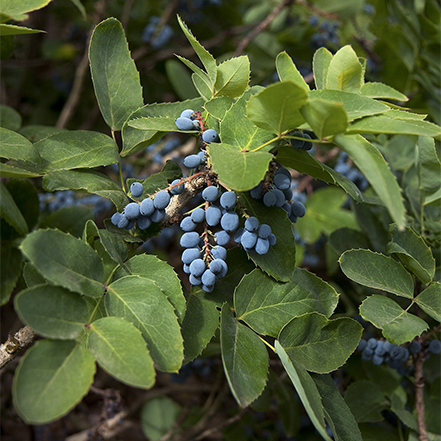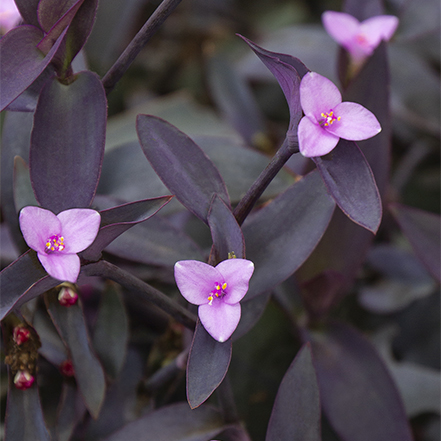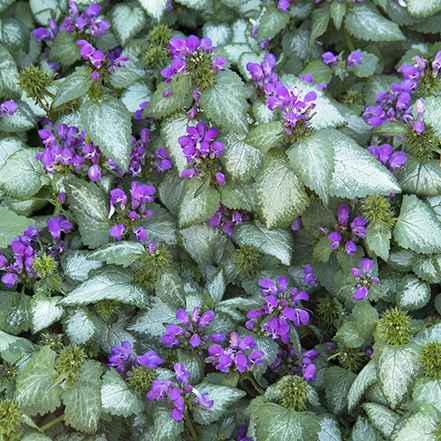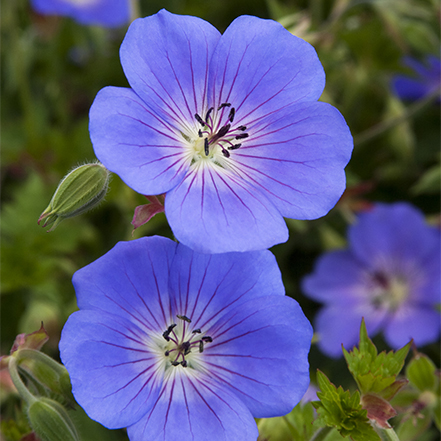Groundcovers are often overlooked as the true stars of landscape design. They are rarely taking center stage like their fellow flora so often do. Sure, specimen trees, colorful perennial flowers, and sturdy evergreen shrubs are great. But as you will see below, groundcovers not only add beauty, they are incredibly useful as well. Their ability to tackle any challenge makes them a must-have in almost any garden. Scroll through to find the best problem-solving groundcover for all your garden challenges below.
To help you with your ground-covering endeavors, this guide covers the following topics:
- Groundcover defined
- How to use groundcovers in the garden
- Low-maintenance groundcover
- Groundcover that controls weeds
- Groundcover for slopes and erosion control
- Groundcover for shade
- Groundcover for full sun
- Drought-tolerant groundcover
- Evergreen groundcovers
- Groundcovers with purple flowers or leaves
- How to grow groundcover
You’ll find groundcover recommendations throughout this guide that you could consider planting in your garden. That said, if you have some insight that you’d like to share about groundcovers, please tag us on social media. @MonroviaPlants. The greater gardening community will thank you!
1. What is a groundcover?
Generally speaking, as the name suggests, groundcovers are groupings of low-growing plants that grow to cover an area. On top of adding dimension to the garden, they're perfect for controlling weeds, erosion, and water evaporation.
- Although they typically grow 2”-18” tall, some groundcovers can grow as tall as 2’ or 3’.
- Groundcovers cover the ground in various ways: clumping, spreading, creeping, self-seeding, etc.
- If appropriately chosen, most groundcovers are very low-maintenance.
- Groundcovers can be evergreen, perennial, or even annuals.
Although ferns, hostas, hellebores, and even suckering shrubs can be used as groundcovers, they get enough airtime. For this guide, we’re going to leave them out of the discussion and stick to “truer” groundcovers.
2. How to Use Groundcovers in Your Garden
Often planted where “lawn meets bed” and along pathways, groundcovers make a great border. They help transition and direct your eye from one space to another more harmoniously. Drifts of groundcovers also provide texture, color, and contrast within a landscape bed. Regardless, these understated beauties often provide the foreground behind which their perennial and evergreen kin can show off.
But beyond their aesthetic value, groundcovers are also steadfast utility players—addressing gardening challenges in ways that other plants cannot. It’s this practical, problem-solving role that makes groundcovers so valuable in the garden.
For instance:
- Groundcovers can be used as an alternative to grass. For instance if your grass doesn’t grow well in a certain area or you have a different design aesthetic. Also, if you just don’t want to mow as much (Dwarf Mondo Grass, vinca).
- As the first layer of plant in a landscape bed, groundcovers make the transition from lawn more gradual and natural. (Golden Variegated Sweet Flag, Big Blue Lilyturf).
- Groundcovers are a great solution for filling bare spots vs. adding more mulch.
- Given their carpet-like habit, some groundcovers are an obvious choice for choking out weeds.
- Groundcovers can soften the edges of a patio or other hardscapes or help create “green joints” between stepping stones.
- One method of reinforcing a boulder wall is to plant groundcovers at the top and in its nooks and crannies. (Emerald Blue Creeping Phlox, Variegated Stonecrop).
- One super effective way to address erosion on a slope or elsewhere is by strategically placing sweeps of groundcovers.
3. Low-Maintenance Groundcovers
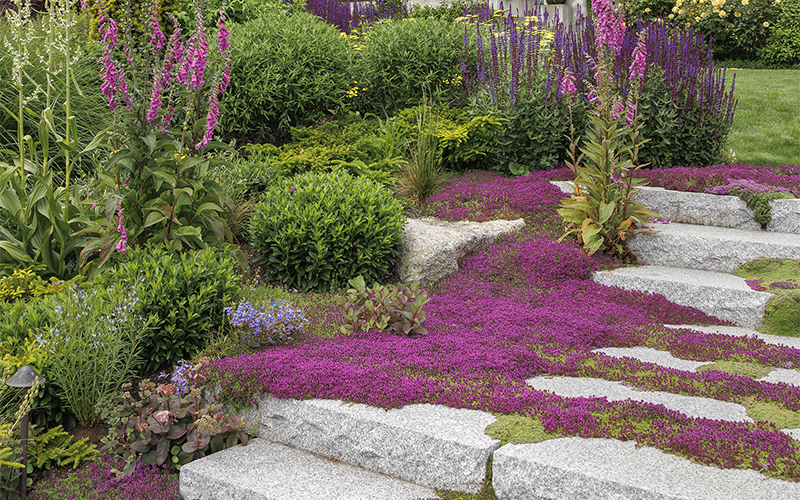
Whether you’re planting your first garden or are a Master Gardener, typically you prefer choosing a low-maintenance groundcover. One that is easy to grow rather than one that requires a lot of care.
Fortunately, most groundcovers fit that bill. Here are three favorite groundcovers that are considered to be particularly low-maintenance:
Black
Mondo Grass
Known for its striking purple-black, grass-like leaves, Black Mondo Grass provides a dramatic contrast. Especially when used en masse at the edge of your lawn or against other green foliage. This clumping, evergreen groundcover is a great choice for contemporary gardens. Partial to full sun. Forms clumps up to 6" tall and wide. Zones 5-10.
Red Creeping
Thyme
Also pictured in the landscape photo above is this perennial herb. It makes for a great groundcover. Use it in cottage gardens and in gaps between stepping stones, as it takes foot traffic well. The added bonus is it provides a delightful fragrance when its leaves are crushed. A great slow-growing, creeping groundcover. Partial to full sun. 6" tall, 18" wide. Zones 4-9.
Dwarf
Plumbago
This showy, versatile, and durable groundcover for sun or shade is a low-maintenance plant. It's a go-to for anywhere you need some easy-going cover. Electric blue flowers are set off by bronze-green to dark green leaves on wiry stems. Spreads slowly, providing wonderful drifts of color. As the flowers fade, the autumn foliage takes center stage, developing brilliant shades of red. Partial to full sun. Up to 18" tall and wide, spreading wider over time. Zones 5-9.
4. Groundcover Plants that Choke Out Weeds
One of the primary reasons groundcovers are used in gardens is to choke out weeds. Low-growing, spreading, and dense plants can out-compete weeds while making a visual impact. In addition to their weed-choking prowess, the three groundcovers below offer so much more. Especially in the way of beauty and interest.
John Creech
Stonecrop
Low-maintenance, drought-tolerant, and durable, this dense, weed-smothering stonecrop features small, scalloped leaves and pink flowers. The foliage and stems develop deep burgundy tones as cooler temperatures arrive. A fine selection for spotting in rock walls and rock gardens, or containers. Partial to full sun. Up to 2" tall, 12" wide. Zones 3-9.
Scotch
Moss
Not a real moss, but rather an evergreen herbaceous perennial. Scotch Moss covers the ground with an almost ethereal-looking blanket of chartreuse green. Then, to add to its heavenly appeal, in late spring and throughout the summer it produces tiny, white, star-shaped flowers. Although it only grows to a height of 1”-2”, weeds don’t stand a chance. Especially against its soft, yet dense, mat of bold foliage. Partial to full sun. Up to 1" tall, 12" wide. Zones 4-8.
Photo by Hort Printers
Huntington
Carpet Rosemary
Also pictured cascading over the walls in the landscape picture above is carpet rosemary. It is both a great weed-choker and useful for erosion control. Also, given its trailing, carpet-like habit, it looks great cascading over a retaining wall. Plus, it’s evergreen, drought-tolerant, and resistant to deer, and its aromatic leaves can be used as a flavorful culinary seasoning. What more could you ask for? Full sun. Up to 2’ tall, 8’ wide. Zones 8-10.
5. Groundcovers for Erosion Control
No other type of plant can control erosion on slopes or other areas of your garden like groundcovers can. And since you need these earth-keeping dynamos to stay put and hold moisture well, you should look for certain groundcovers. Ones that are more deeply rooted than others. Here are three that are great at covering hillsides and providing dependable erosion control on challenging slopes.
Massachusetts
Kinnikinnick
Also pictured in the landscape above is the Northeastern native groundcover. This very cold-hardy plant has clusters of pale pink two-inch bell-shaped flowers. Those are followed by ornamental red berries that persist into winter. Autumn foliage is tinged red-gold. The low, spreading form is very useful for covering low-water hillsides in cooler regions. Partial to full sun. Up to 1' tall, 15' wide. Zones 2-6.
Dwarf Japanese
Garden Juniper
There are few groundcovers that perform as well on slopes. This ground-hugging, evergreen workhorse really covers a lot of ground! But don’t limit planting this dwarf variety of juniper on slopes. It’s a great addition to a rock garden or as a border plant where it gets full to partial sun. Partial to full sun. Up to 1' tall, 6' wide. Zones 4-9.
Emerald Goddess®
Lilyturf
Not only does this lilyturf hold its ground on almost any hillside, but it also holds its color through winter. It is resistant to crown rot, and has good cold and drought tolerance. This clumping variety of groundcover prefers full to partial sun and is the epitome of low-maintenance. Shows off its intense purple flowers in summer. Partial to full sun. Up to 24” tall and 30" wide. Zones 5-11.
6. Groundcovers for Shade
Groundcovers are particularly useful at the edge of your lawn where the tree canopy provides a bit too much shade. Likewise, if there's a tree in the middle of your lawn and you don’t want to “shrub it up” underneath. Here are three favorite groundcovers that are excellent choices in these shady situations.
Jack Frost
Brunnera
Also pictured in the landscape photo above is Jack Frost's. Bright silver and green leaves brighten up the shady areas of your garden creating a shimmering groundcover when planted together. This clump-forming, deciduous perennial groundcover will spread underground through its rhizomes. Not only is it shade-loving, but it’s also deer and rabbit resistant. It also offers a beautiful display of light-blue, forget-me-not flowers in spring. Partial to full shade. Up to 12" tall, spreading to 24" wide; blooms reach 18" tall. Zones 3-8.
Beesia
A gently-spreading evergreen groundcover from the Dan Hinkley Collection with exceptionally shiny, green to gunmetal blue, heart-shaped leaves. The foliage creates a handsome backdrop for the pretty star-shaped spring flowers. This fuss-free filler thrives in dappled shade, perfect for a narrow bed, tree understory or woodland garden. Partial to full shade. Up to 18" tall, 24" wide. Zones 6-8
Ice Dance
Japanese Sedge
A lush mound of slender, bright green leaves with strong creamy white margins. This will brighten woodland gardens, water gardens, and shady borders. Spreads gently by underground stems (rhizomes) to create a dense mat of foliage. An easy-growing, non-invasive groundcover that is semi-evergreen, too. Partial shade to partial sun. Up to 1' tall, spreading slowly by rhizomes to form a carpet. Zones 5-9.
7. Full Sun Groundcover
On the opposite end of the sun spectrum, you may be looking for groundcovers that thrive in full sun. If so, you’re in luck because there are many to choose from. Here are three favorite full-sun groundovers to get you started.
Nitty Gritty™
White Rose
Not just a pretty face. This very durable, own-root, fuss-free groundcover rose produces an abundance of lovely blooms. It also offers excellent disease resistance and a self-cleaning, easy-to-care-for habit. The white double blooms provide exquisite warm season color, adding great low-maintenance curb appeal to the landscape. Full sun. Up to 3' tall, 4' wide. Zones 4-9.
Big Ears
Lamb’s Ear
With its fuzzy, silver-green leaves, this is an easy-care, ground-covering crowd-pleaser. It provides a nice contrast to the other textures and colors in a typical garden. Its unique foliage is prized by gardeners for cuttings but is also likely why deer and rabbits typically avoid it. Partial to full sun. Up to 12” tall, 2’ wide. Zones 4-9.
Firewitch
Dianthus
A great sun-loving groundcover if you’re looking for a pop of bold color. The profuse display of bright magenta-pink flowers makes a strong statement against its blue-gray foliage. And if that’s not enough, it offers a number of other wonderful attributes. For one, it has a spicy, clove-like fragrance. It also attracts butterflies, is deer resistant, heat tolerant, and cold hardy. Lastly, it will out-compete most any weed if planted in masses. Partial to full sun. Up to 1' tall and wide. Zones 3-9.
8. Drought-Tolerant Groundcover
If you live in a region that is particularly dry all year, it’s wise to limit your groundcover browsing. In particular, to a drought-tolerant groundcover. This also applies if your region is dry for periods of time. There are a wide array of succulents you could consider. But don’t stop there, there are many non-succulent groundcovers to choose from, too. Here are our favorites.
Blue
Chalksticks
A small, low-growing succulent, branching from the base and rooting along the stems. It provides an easy-care, attractive groundcover for warm sunny hillsides and yards. Powdery blue-green fleshy leaves provide year-round interest, taking on purple tints in extreme heat and sun exposure. Full sun. Up to 1' tall, spreading to 3' wide. Zones 10-11.
Bronze Carpet
Stonecrop
Known for its beautiful, ground-hugging mat of bronze-red foliage: Bronze Carpet. It is an excellent groundcover for Mediterranean-style gardens, hillsides, or on top of or within boulder walls. And the sunnier the spot the more intense its color will be. Evergreen in mild winter regions. Partial to full sun. Up to 6" tall, 24" wide. Zones 3-9.
Red Wings
Creeping Phlox
If you’re looking for an extreme pop of color, then creeping phlox may just be the groundcover you’re looking for. This eye-grabbing, evergreen creeper dependably shows off its masses of pinkish-crimson flowers, spring to summer. The perfect selection in various spots throughout your garden: along pathways, on slopes, in borders, or cascading over rock walls. Full sun. 6" tall, 3' wide. Zones 3-9.
9. Evergreen Groundcovers
Evergreen groundcovers are not only valued because they look great year-round. They are also working hard to minimize maintenance 24/7/365 as well. We’ve already made several other evergreen groundcover recommendations, but here are three more.
Himalayan
Sweet Box
An excellent evergreen groundcover for your woodland garden. Its uniform, dark-green leaves create a clean, carpet-like look. This is perfect for mass plantings near an entryway or as a border along a meandering path. And if that’s not enough, come winter, you can enjoy its fragrant white blooms. Right when most of the garden is asleep. Partial to full shade. Up to 2' tall, spreading to 8' wide. Zones 6-9.
Icee Blue®
Juniper
An exceptional introduction that exhibits the best silver-blue winter color of the groundcover junipers. Maintains a full, dense crown of finely textured foliage, creating a solid cover in a short time. Winter foliage becomes plum-purple in the coldest climates. Easy and highly adaptable to heat, poor soils, and urban settings. Full sun. Up to 4' tall, spreading up to 8' wide. Zones 3-9.
Creeping
Oregon Grape
This low, sprawling North American native shrub features leathery, spiny, green foliage. It sprays of bright yellow spring flowers that are followed by clusters of blue-black fruit in late summer. Excellent for use as a large-scale groundcover in a woodland garden. Provides effective erosion control for slopes, too. Partial shade to partial sun. Up to 2' tall, spreading to 4' wide. Zones 5-9.
10. Purple Groundcover
Purple is always in style when it comes to gardening, and we're always getting requests for more purple choices. We’ll close out this groundcover guide with three crowd-pleasing purple groundcover selections.
Purple
Heart
For those of you who really like purple, this is the groundcover for you. Its dark-purple lance-shaped leaves and purple-pink flowers make it a great choice. Use it on its own in a mass planting or as contrasting color when mixed with other perennials. Try putting it together at a bed’s border, in a window box, or other containers. Its trailing habit also makes it perfect for cascading over a retaining wall. Drought and heat tolerant. Partial shade to full sun. Up to 18" tall and wide. Zones 7-11.
Purple Dragon
Dead Nettle
This is an exceptional groundcover in a woodland garden. It contains shimmering silvery white leaves and a profusion of deep-purple flowers in summer. Performing well in full to partial shade, this spreading groundcover is the perfect selection. Place it along paths or, to create a more naturalized look and feel, at the borders of your landscape beds. Partial to full shade. Up to 12" tall, spreading to 24" wide. Zones 4-9.
Rozanne
Cranesbill
Great small-scale groundcover for rock gardens! The gently spreading form has dainty violet flowers that show color for many months. The lush mound of deep-green foliage is lightly marbled with chartreuse. Nearly evergreen in most climates. 2008 Perennial Plant of the Year. From Rozanne and Friends™. Partial to full sun. Up to 20" tall, 24" wide. Zones 4-10.
11. How to Grow Groundcover
As with any plant, you need to ensure that a specific groundcover will thrive where you want to plant it. So choose a groundcover that matches your hardiness zone.Read the label to ensure that the sun, soil, and moisture conditions are right.
In addition, groundcovers cover an area in various ways and at various rates. Depending on your design objectives or what problem you’re trying to solve, knowing how a particular groundcover spreads is important. Especially for choosing, planting, and maintaining it. For instance, if you’re trying to minimize how much you weed, sooner rather than later, choose a rapid-growing groundcover. Make sure that it has a spreading, carpet-like habit (vs. clumping), like Goldilocks Creeping Jenny.
Planting and caring for groundcovers isn’t too different from other plants. Here are some pointers that are more specific to groundcovers:
- Weeds compete more directly with groundcovers than they do other types of plant material. Given that they live in the same space and often have the same habit. So before planting, go ahead and take out the weedy competition from the get-go.
- When planting groundcovers in flat areas, loosen the soil where you want them to spread. Use a depth of about 4”-8” (depending on the type). This is particularly important if you live in an area with clay-heavy soil. Also if the particular groundcover spreads underground.
- However, for steep slopes it’s probably best that you don’t loosen the soil as that can contribute to further erosion. Instead plant the groundcover like you would any other plant. (i.e., dig a hole the same depth as the plant’s root ball and twice as wide as the container). It’s also best that you stagger the rows of groundcovers. This prevents the water from having an opportunity to run straight down the slope.
- To give your groundcovers an extra boost over time you can add a 2” layer of organic matter. This will also help to improve soil quality so that they spread more freely.
- Since groundcovers have varying eventual spreads, make sure to follow the spacing instructions found on the label when planting them. Placing them too closely together will cause a variety of problems. For one, it can be a waste of time and money. Furthermore, it will increase competition among the individual plants potentially causing them to not thrive. On the other hand, planting groundcovers too far apart could result in bare spots, giving weeds the opportunity to grow.
- Speaking of weeds, it’s important to stay on top of your weeding efforts until your groundcovers are fully mature. As was the case when you initially planted your groundcovers, you want to minimize the competition. And be patient, it could take up to three years until they reach maturity. However, it will be well worth the wait.
Choosing the right groundcover for the right space will beautifully and dependably allow your garden to perform its best.
If you weren’t a groundcover believer before, hopefully you are now. They really make a garden. And with all the information we’ve shared, there’s just one thing left to do. That’s to get out there and start covering some ground. But if we’ve missed something that you think your fellow gardeners would find helpful, please let everyone know. Write in the comments below or tag us on social media @MonroviaPlants.
About the Author and Designer
Doug Scott is the owner and lead designer at Redeem Your Ground, an exterior design firm, based in Atlanta, GA. Through his designs, Doug hopes to create outdoor spaces that reflect each clients wants to live outside at home. Doug and his wife, Brittany, also have a family, home & garden blog by the same name. They share stories, helpful information, and instructional how-to’s—hoping to enable and inspire others to live more fully at home.




